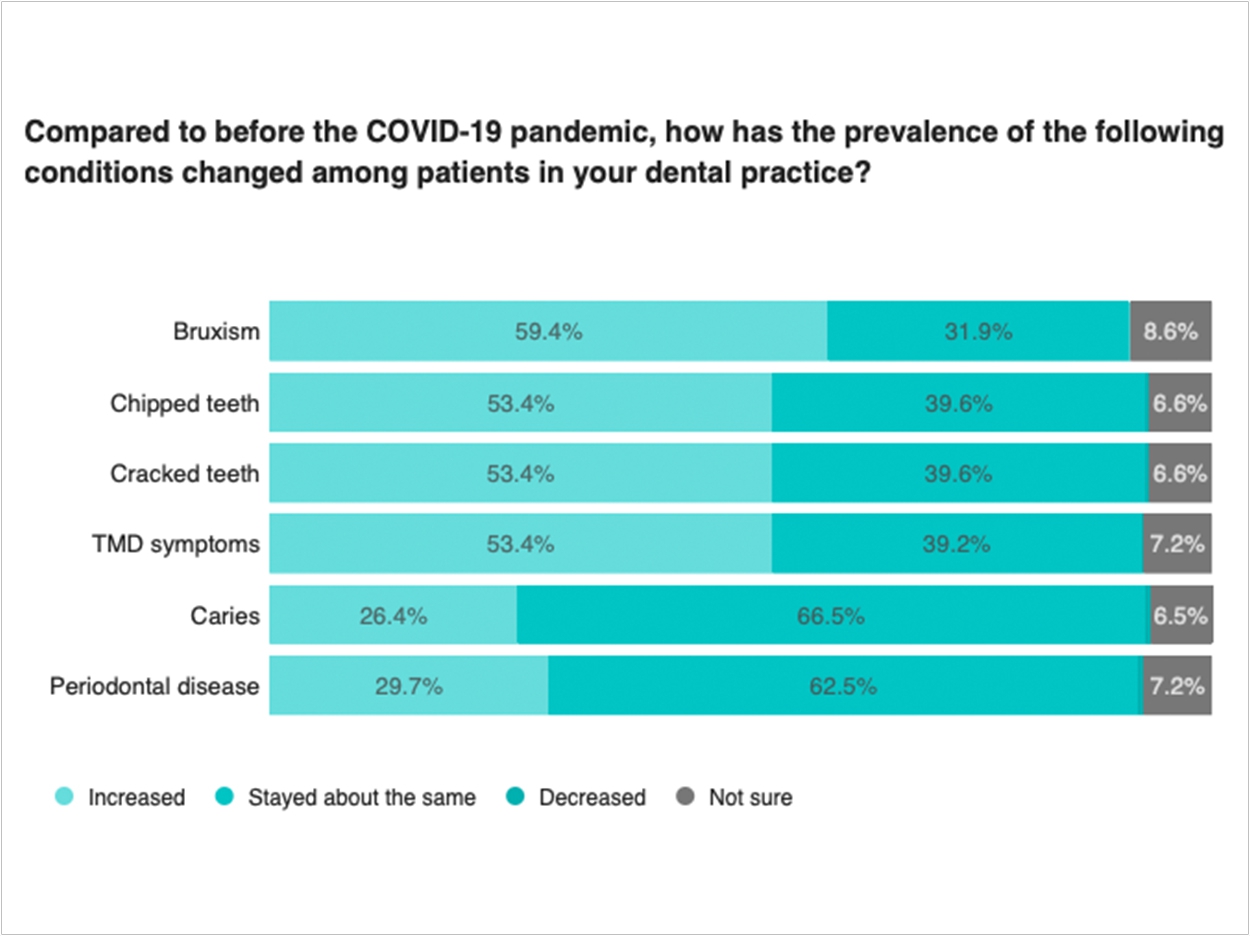
Most dentists have seen a greater number of stress-related oral health issues among their patients since the start of the pandemic, according to the ADA Health Policy Institute (HPI) September 21 biweekly poll.
During the poll, 59.4% of dentists reported increased in bruxism, 53.4% saw more chipped and cracked teeth, and 53.4% reported more frequent temporomandibular disorder symptoms. Also, 26.4% noted an increase in caries, and 29.7% saw more periodontal disease.
Meanwhile, more than 99% of dental offices in the United States were open during the week of September 21, patient volume had leveled off at just over 80% of pre-pandemic levels, and staffing was at 95% of pre-pandemic levels.
These numbers have been largely stable over the past two months, the ADA HPI said, suggesting that practices are reaching a “steady state” of economic activity.
Many dentists have taken aggressive measures to maintain this financial stability, the ADA HPI said, such as:
- 44.6% have borrowed from a bank
- 29.6% have raised fees
- about 20% have reduced their dental team hours, downsized their dental team, or changed their supplier or lab
- 8.3% have disenrolled from benefits plans
Furthermore, if patient volume remains at these levels through the end of 2020, more than half would consider raising fees, about a third would reduce dental team hours, about a quarter would consider changing their supplier or lab or disenrolling from benefits plans, and about 8% would consider joining a dental service organization or large group practice.
Also, the poll results on patient volume are in line with a September 23 preliminary report from the Centers for Medicare & Medicaid Services (CMMS) on use among Medicaid and Children’s Health Insurance Program beneficiaries age 18 and under during the pandemic.
According to the CMMS, the number of dental services for children declined through April and started rising in May, though it was still substantially lower than rates in previous years.
Also, dental services declined by 69% from March to May compared to March through May of 2019, which the ADA called a more significant drop than the decreases seen in vaccinations, overall health screenings, and mental health services.
Related Articles
ADA Says Dentistry’s Recovery Has Leveled Off
ADA Says Dentists Should Be Among First to Receive COVID-19 Vaccine
ADA Commends Healthcare Readiness Legislation












